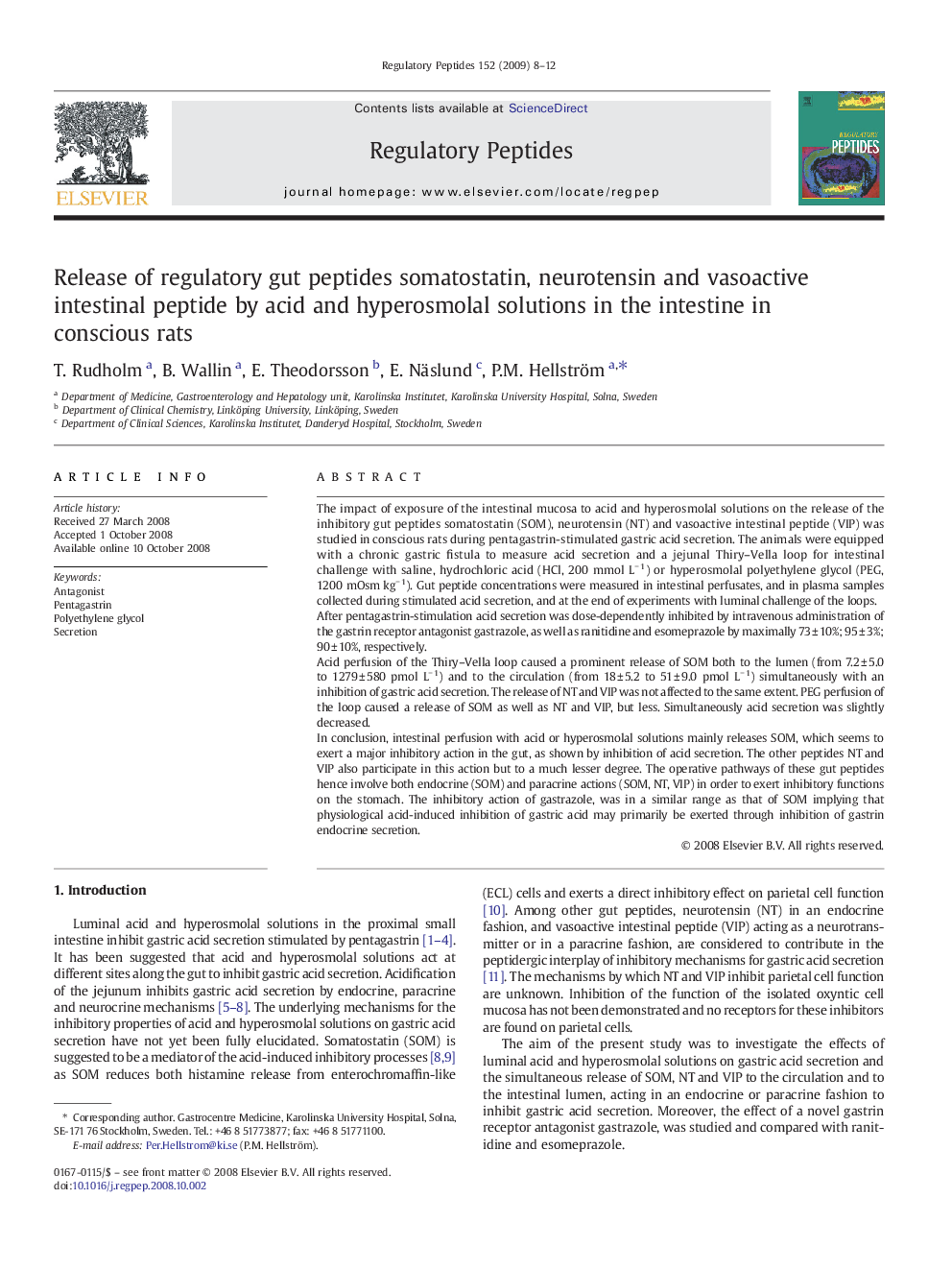| Article ID | Journal | Published Year | Pages | File Type |
|---|---|---|---|---|
| 2023062 | Regulatory Peptides | 2009 | 5 Pages |
The impact of exposure of the intestinal mucosa to acid and hyperosmolal solutions on the release of the inhibitory gut peptides somatostatin (SOM), neurotensin (NT) and vasoactive intestinal peptide (VIP) was studied in conscious rats during pentagastrin-stimulated gastric acid secretion. The animals were equipped with a chronic gastric fistula to measure acid secretion and a jejunal Thiry–Vella loop for intestinal challenge with saline, hydrochloric acid (HCl, 200 mmol L− 1) or hyperosmolal polyethylene glycol (PEG, 1200 mOsm kg− 1). Gut peptide concentrations were measured in intestinal perfusates, and in plasma samples collected during stimulated acid secretion, and at the end of experiments with luminal challenge of the loops.After pentagastrin-stimulation acid secretion was dose-dependently inhibited by intravenous administration of the gastrin receptor antagonist gastrazole, as well as ranitidine and esomeprazole by maximally 73 ± 10%; 95 ± 3%; 90 ± 10%, respectively.Acid perfusion of the Thiry–Vella loop caused a prominent release of SOM both to the lumen (from 7.2 ± 5.0 to 1279 ± 580 pmol L− 1) and to the circulation (from 18 ± 5.2 to 51 ± 9.0 pmol L− 1) simultaneously with an inhibition of gastric acid secretion. The release of NT and VIP was not affected to the same extent. PEG perfusion of the loop caused a release of SOM as well as NT and VIP, but less. Simultaneously acid secretion was slightly decreased.In conclusion, intestinal perfusion with acid or hyperosmolal solutions mainly releases SOM, which seems to exert a major inhibitory action in the gut, as shown by inhibition of acid secretion. The other peptides NT and VIP also participate in this action but to a much lesser degree. The operative pathways of these gut peptides hence involve both endocrine (SOM) and paracrine actions (SOM, NT, VIP) in order to exert inhibitory functions on the stomach. The inhibitory action of gastrazole, was in a similar range as that of SOM implying that physiological acid-induced inhibition of gastric acid may primarily be exerted through inhibition of gastrin endocrine secretion.
